Review: 2014 Kia Sorento EX (Video)

To say the Sorento’s transformation from rugged body-on-frame SUV to car-based softroader has been a sales success is putting it mildly. In the first 27 months of production Kia shifted more Sorentos than they did the 8 years prior. Sales numbers like that catapulted the Korean krossover (couldn’t help it) from CX-9/Xtera/Murano competition to 7th place in the midsized battlefield. Three model years later, Kia is spicing things up with a refresh. I know what you’re thinking: why bother looking at a refresh? Because 2014 brings enough changes to call the 2014 Sorento a redesign.
After three years, most car companies slap on a new nose, tweak some paint and trim options and call it good for another three years. At first glance it seems that Kia has done the usual, but the similarity is skin deep. The front and rear get tweaks of course, but its the chassis that’s been substantially changed with new floor stamping to improve interior room, new suspension subframes, different welding techniques, suspension geometry changes, additional chassis bracing in addition to a refreshed interior and exterior. In all, only 20% of the parts from last year remain. If you doubt the magnitude of the change, check out the curb weight which is down 250lbs vs the 2013 model, that’s no small feat.
As before, the Sorento offers your choice of 5 or 7 passenger seating, yet the Sorento still isn’t a large SUV at 184-inches long. That’s 15 inches shorter than a Durango, 7 inches shorter than a Pilot and even 6 inches shorter than the other 5/7 passenger “tweener” crossover, the Dodge Journey. The RAV4, CR-V and Sportage are a half step smaller putting the Kia and its Hyundai sister-ship in their own small category. (Remember, the RAV4 ditched its 7-seat option this year.)
The Sorento has never been a flashy vehicle, that’s not Kia’s style. Instead we get slab sides reminiscent of the American competition and a front end that could easily have been turned into a new Saab 9-7x. Up front we get Kia’s new bow-tie/semi-kidney grille and our EX model came standard with the rather vertical foglights. Out back 2014 brings new tail lamps and new sheetmetal to the tailgate giving the Sorento’s rear as much style as any other mid-size crossover. Checking out that side profile you’ll notice the Sorento still sports a rather vertical hatch thanks to the 7-seat option. That means if you opt for the 5-seats you still get a cargo area that’s nice and square, making it more useful (but perhaps less sexy) than the sloping profiles of the 5-seat-only crossovers.
Interior
On the surface the Sorento looks like any aspiring near-luxury crossover. Until you put your hands on the dashboard. While everyone else is doubling-down on squishy injection molding and stitched pleather, the Sorento’s trendy shapes are cast from hard plastic. Before we start drawing any Chrysler parallels, you should know that Kia’s plastics look attractive, they just don’t feel premium. Is that a problem? Not when the Sorento starts at $24,100, but it is something to keep in mind if you’re contemplating a fully-loaded 7-passenger Sportage Limited at $41,850. On the flip side, the Sportage offers a high level of equipment for the dollar and a 5 year/ 60,000 mile warranty with 10 year / 100,000 mile powertrain coverage. How much are soft surfaces worth to you?
Thanks to tweaked seat designs, the Sorento’s thrones no longer feel as if they are cast from concrete, but they still aren’t as cushy as GM’s seats. For $32,650, our EX heated and cooled my backside compensation. As with every other vehicle, seats get less comfortable as you move to the back. The middle seats recline and fold in a 40/20/40 fashion allowing you to carry long cargo and four passengers at the same time. Available heated seats and integrated sunshades round out the Sorento’s compensation for the plastics choices. While the middle seats are fine for long road trips, the $1,200 third row should be reserved for emergencies, enemies and mother-in-laws.
When you’re a half step between the competition dimensionally but offer the same number of seats as the big boys, something has to give, and that’s the cargo area. With 36.9 cubic feet behind the second row, the Sorento lags even the smaller RAV-4 and CR-V (38.4 and 37.2). If you don’t get that third row, you get an additional 9+ cubes under the load floor, just under what’s required to hide a journalist. (Don’t know what that’s about? Click on that video.) If you put a pair of passengers in the third row, you’re going to need a roof-top cargo box or a trailer because the cargo area shrinks to 9 cubic feet, only 2 cubes more than a Beetle Convertible.
So is $600 a pop for two seats worth it? I’d do it, and here’s why. Despite being considerably smaller than the Highlander, Pilot, Durango and Explorer, Kia’s third row offers about the same amount of room with 31.7 inches of legroom and 35.7 inches of headroom. I wouldn’t recommend anyone’s third row for daily use, but it is handy in a pinch.
Infotainment
Base Sorentos come well equipped with standard Bluetooth streaming/telephone integration, SiriusXM Satellite radio, a CD player, USB/iDevice integration and six-speakers. I’m so used to saying “you won’t find one of these base models on the lot” that I did a double take when the Kia vehicle locator found 24 such examples (out of 174) within 50 miles of my location. The base system surprised with excellent sound for the price and if you don’t need navigation, there is little to complain about.
Most Sorentos on the lot will have Kia’s refreshed 8-inch touchscreen system (navigation is a further option, but standard on SX and Limited) and a large number of them will have the up-level 10-speaker audio system by Infiniti (Standard on SX and Limited, optional on all modes). For 2014 Kia has renamed and re-worked the software. “UVO eServices” must have sounded better than UVO two-point-oh. The software tweaks bring better graphics, faster response times and improved voice commands including USB/iDevice voice control. In addition to improving the system, Kia has integrated a number of smartphone apps with Google’s help. You can now download destinations to the car after looking them up on your iPhone (there is only an iOS app at the moment), find your lost car in a parking lot, use your phone’s data connection to run vehicle diagnostics/heath checks and the car will call 911 for you if the airbags deploy. None of this is revolutionary, putting UVO right in the middle of the pack. What is new is the price for the service: there isn’t one. Unlike Toyota’s Entune, Kia claims there is no fee for the service even after a few years. If you want to know more about the infotainment options, just click on that video at the top of the review.
While not strictly an infotainment device, EX models and above (optional on the base LX) get Kia’s oddly named “Supervision” instrument cluster. The 7-inch LCD disco dash looked good even in strong sunlight, but it will never be as readable as a regular old analogue gauge. Rather than going completely modern, Kia stuck to a red analogue needle against white numbers for the speedometer while the center of the LCD is used for vehicle settings, navigation directions, infotainment details and a trip computer. Unlike Chrysler and Cadillac’s latest LCD systems, this display isn’t very customizable as there are no alternative layouts or themes that can be applied.
Drivetrain
Rounding out the refresh is a revised engine lineup. The 175HP 2.4L base engine is gone with the formerly optional 191HP, 181lb-ft 2.4L direct-injection four taking its place. The 16HP and 12lb-ft bump are minor, but a better torque curve made possible by the DI sauce combined with a 250lb weight loss make the difference noticeable. On the downside, fuel economy suffers from the upgrade dropping the AWD model from 21/27/23 (City/Highway/Combined) to 19/24/21. Some of the drop is likely due to changes in the way the transmission shifts, but also perhaps to Kia re-stating their MPG numbers to be more realistic.
Optional on the Sorento LX and standard on EX, SX and Limited is Hyundai/Kia’s newest 3.3L direct-injection V6 making its way across the lineup. Cranking out 290 ponies and 252 twists vs 273/247 for the old 3.5 mill, the difference behind the wheel is largely in the way power is delivered. Our tester scooted from 0-60 in 7.23 seconds, about 2/10ths faster than last year’s 3.5L model. If you go by the EPA scores, the new engine is simply an even trade with the same 18/24/20 MPG score as before. However, unlike the 2013 model, our Sorento averaged a better than expected 22.1MPG in mixed driving as compared to 19.5 in the old model on the same route. Adding the V6 increases towing capacity from 1,500lbs to 3,500lbs with or without AWD.
Sending power to the ground is the ubiquitous Hyundai/Kia 6-speed automatic transaxle. For $1,800 you can add an AWD system with a driver-lockable center coupling. This isn’t quite the same as a locking differential in a traditional truck-based SUV, but it is more than you find in most softroaders. For 2014 Kia has also tossed in a torque vectoring system that uses the ABS system to brake wheels independently to shuttle power around for better grip. Why bother? Because everyone else is doing it and it doesn’t take much effort to re-program your braking system. Does it help? I didn’t notice a difference.
Despite the changes to the suspension and chassis, you won’t notice much of a difference out on the road either. The Sorento is light of steering and soft of spring. Thank the steering feel, or lack there of on a new electric power steering system. (Yes, the Sorento offers variable assist electric steering, but neither of the three modes brings extra feel with it.) Perhaps in keeping with its light-truck origins, the Sorento wears some high profile rubber, LX models start out with 235/65R17s , our EX model took things down to a still tall 235/60R18 and Limited models get 235/55R19 tires. Tall tires, light steering, soft springs and light weight roll bars allow the Sorento almost as much body roll in the curves as that GMT-360 SUV that came to mind earlier. Thankfully, the light curb weight which is only 140lbs more than the RAV4 (four-cylinder Sorento) means that despite the lean, grip is on par with the small guys and slightly ahead of the considerably heavier Edge, Explorer, Pilot, Highlander or Traverse.
The Sorento is a textbook modern Kia. The exterior styling is unlikely to set your heart on fire, but it won’t offend anyone either. The interior apes the style and features of the next price class above, but casts it in durable, hard plastic. That makes the Sorento sound like a very average vehicle, but the key to Kia’s success is value. When you adjust for the standard features on the base LX model, the Sorento is a $1,500 better value than the Dodge Journey, often cited as the cheapest and most un-loved of the 7-seat set. Compare the Sorento to a comparable Ford Edge or Toyota Highlander and the Kia is $4,000-5,000 less. See why the hard dash plastics that other reviewers complain about don’t bother me? Because value speaks to me, and judging by the sales it speaks to a large number of shoppers. Toss in that long warranty and the only thing that surprises me is that the Sorento is only “7th” in the mid-size SUV class.
Hit it
- Finally a base model that isn’t a penalty box.
- Possibly the best MPGs for a non-hybrid, V6, 7-seat crossover.
Quit it
- The LCD speedo is interesting, but I expected it to “do” more than just show me an analogue needle.
- The Sorento’s ride still needs a redesign.
Kia provided the vehicle, insurance and one tank of gas for this review.
Specifications as tested:
0-30: 3.0
0-60: 7.23
1/4: 15.68 @ 89.6
22.1 over 786

More by Alex L. Dykes
Latest Car Reviews
Read moreLatest Product Reviews
Read moreRecent Comments
- 1995 SC I wish they'd give us a non turbo version of this motor in a more basic package. Inline Sixes in trucks = Good. Turbos that give me gobs of power that I don't need, extra complexity and swill fuel = Bad.What I need is an LV1 (4.3 LT based V6) in a Colorado.
- 1995 SC I wish them the best. Based on the cluster that is Ford Motor Company at the moment and past efforts by others at this I am not optimistic. I wish they would focus on straigtening out the Myriad of issues with their core products first.
- El Kevarino There are already cheap EV's available. They're called "used cars". You can get a lightly used Kia Niro EV, which is a perfectly functional hatchback with lots of features, 230mi of range, and real buttons for around $20k. It won't solve the charging infrastructure problem, but if you can charge at home or work it can get you from A to B with a very low cost per mile.
- Kjhkjlhkjhkljh kljhjkhjklhkjh haaaaaaaaaaahahahahahahahaha
- Kjhkjlhkjhkljh kljhjkhjklhkjh *Why would anyone buy this* when the 2025 RamCharger is right around the corner, *faster* with vastly *better mpg* and stupid amounts of torque using a proven engine layout and motivation drive in use since 1920.



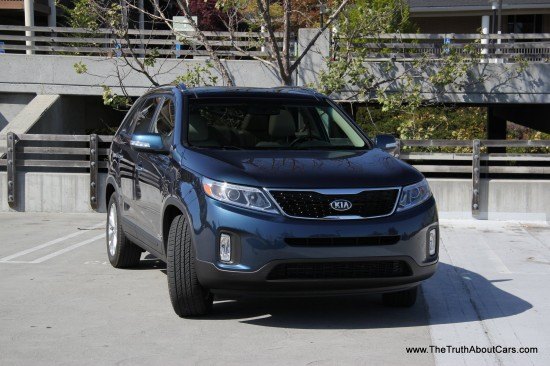




























































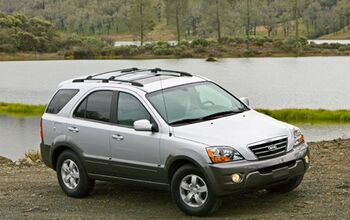
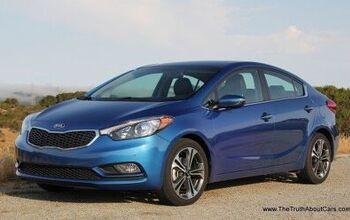
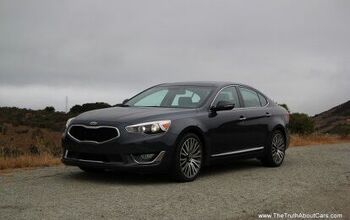
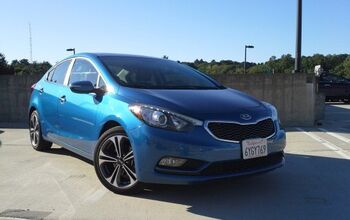
![2016 Kia Sorento Limited V6 Review - Not Your Father's Kia [Video]](https://cdn-fastly.thetruthaboutcars.com/media/2022/07/19/9238659/2016-kia-sorento-limited-v6-review-not-your-father-s-kia-video.jpg?size=350x220)










Comments
Join the conversation
Kia has for sure changed. Obnoxious dealerships that literally have salesmen chasing you around while your trying to look at the vehicles, trying to get out of honoring certain warranty claims, over priced vehicles (36K for an Optima turbo SX is borderline insanity) indifferent quality control standards with 3 year old Sorento's that have peeling alloys wheels and numerous other lapses and last but not least lying about there vehicles mileage. What ever happened to the inexpensive cheeky company that stood out from the rest?
We had a 2003 Kia Sorento EX, green with beige cladding and beige interior, fully loaded---and kept it until it died in a tragic rollover accident in Spring of 2009. My mother claims to like it better than the Nissan Murano SL that replaced it. As for this new one, I can say that Kia/Hyundai did a good job with it and the Santa Fe. It seems that the Santa Fe takes the smallest and largest segments of the mid-sized crossover classification (which might as well also encompass the oversized Escape, RAV4 and CR-V), while the Sorento takes the middle. That, to me, is far better than there being a Sorento and a Santa Fe sized identically, with only styling and badges to differentiate them. Being a pre-coroporate-revolution product, it still isn't quite as tastefully-styled as the Optima, Soul, Rio or 2014 Forte. But at the same time, I can see a little bit of the VW Touareg in the center-stack and instrument cluster...which isn't at all a bad thing.